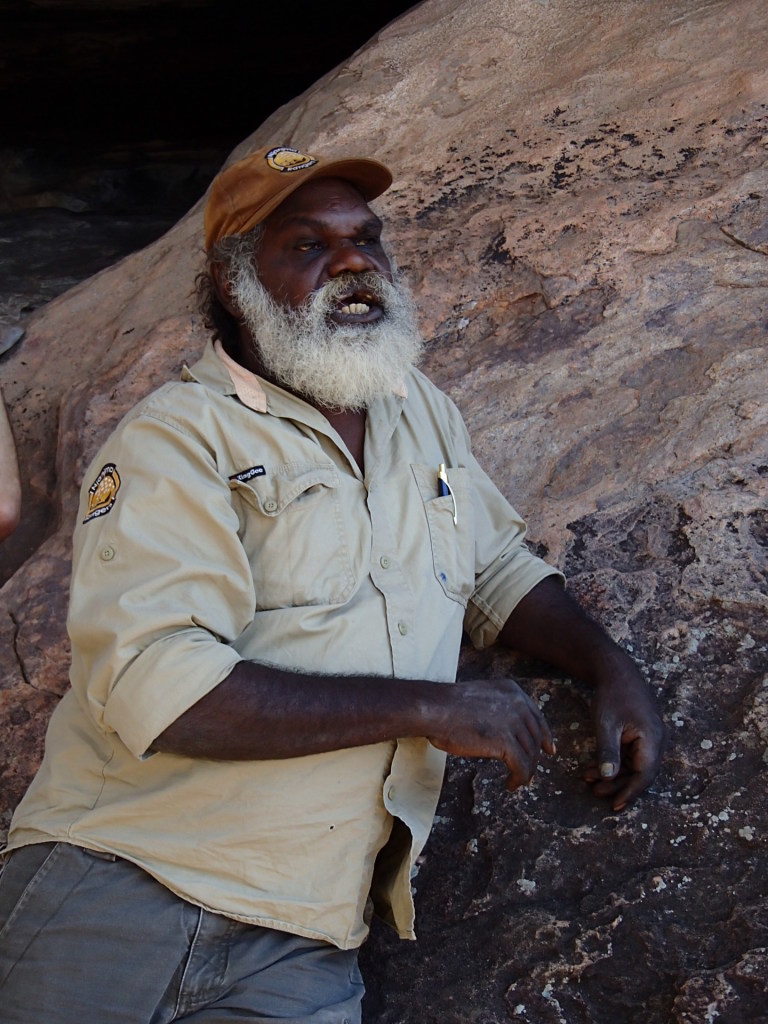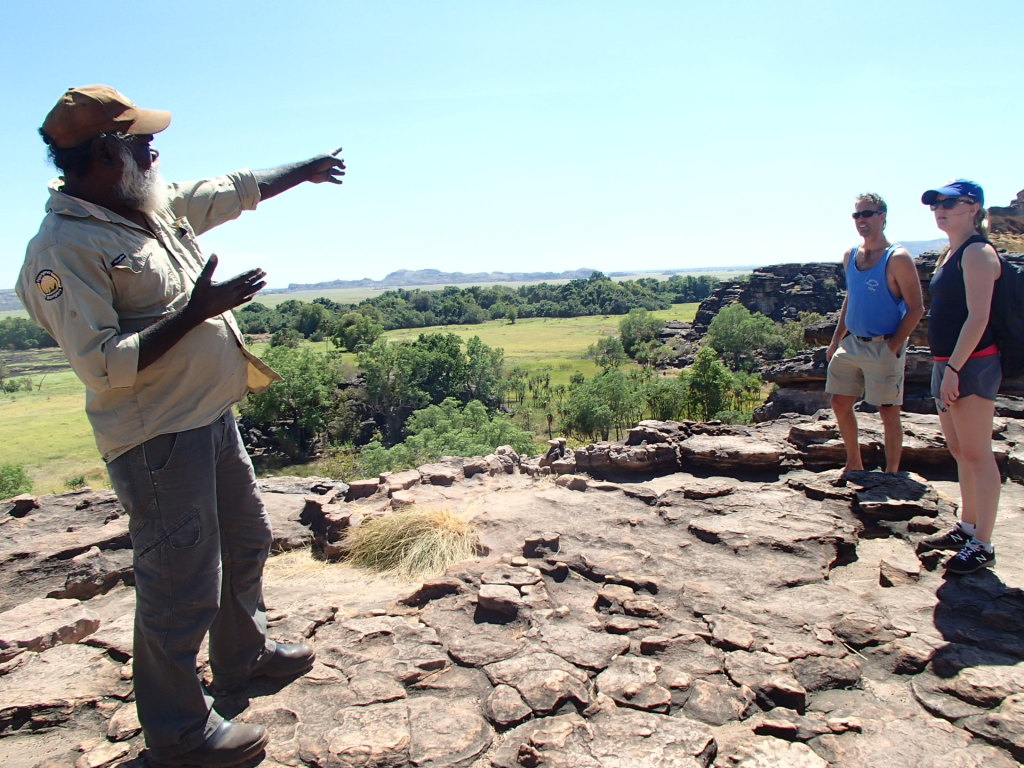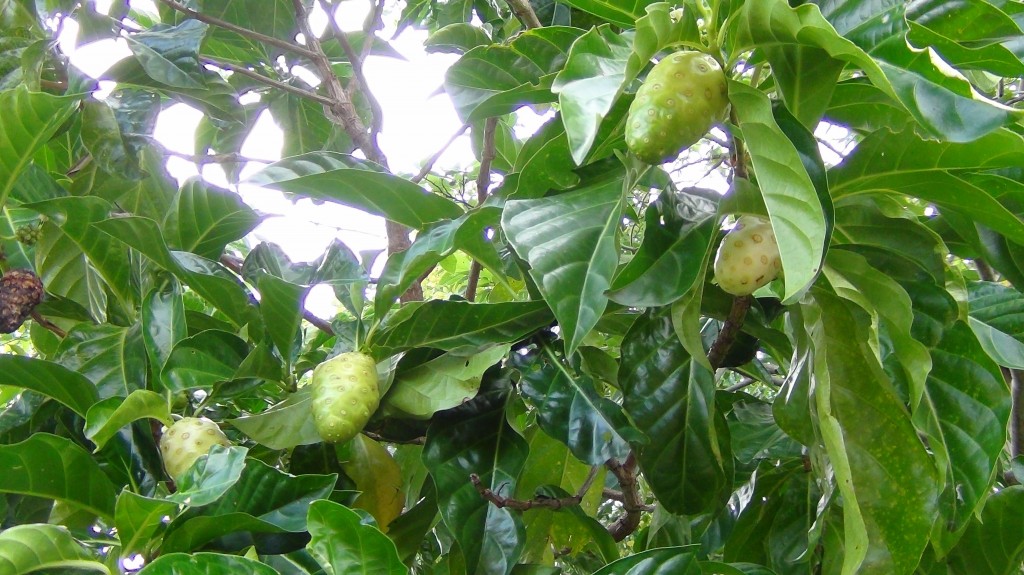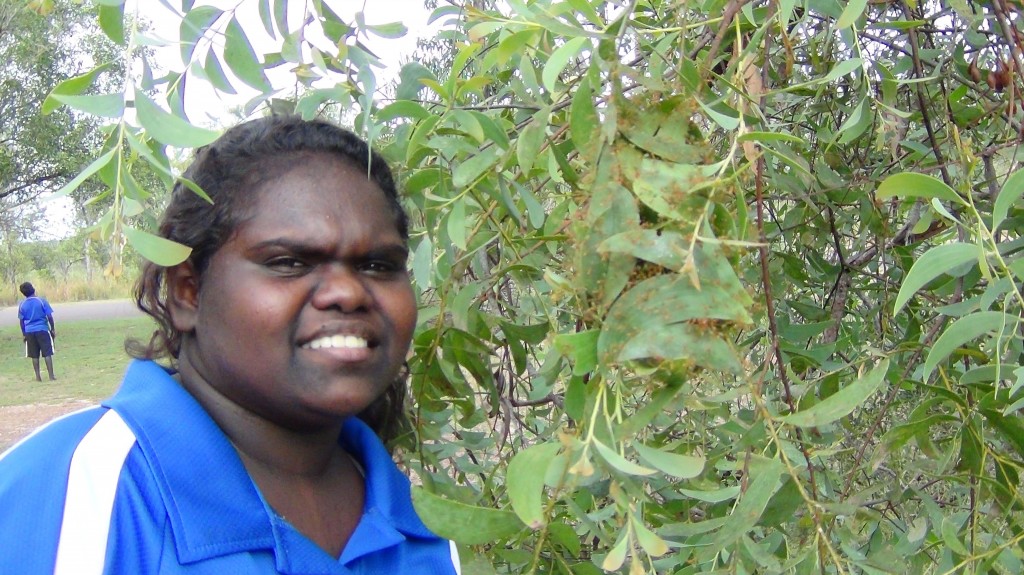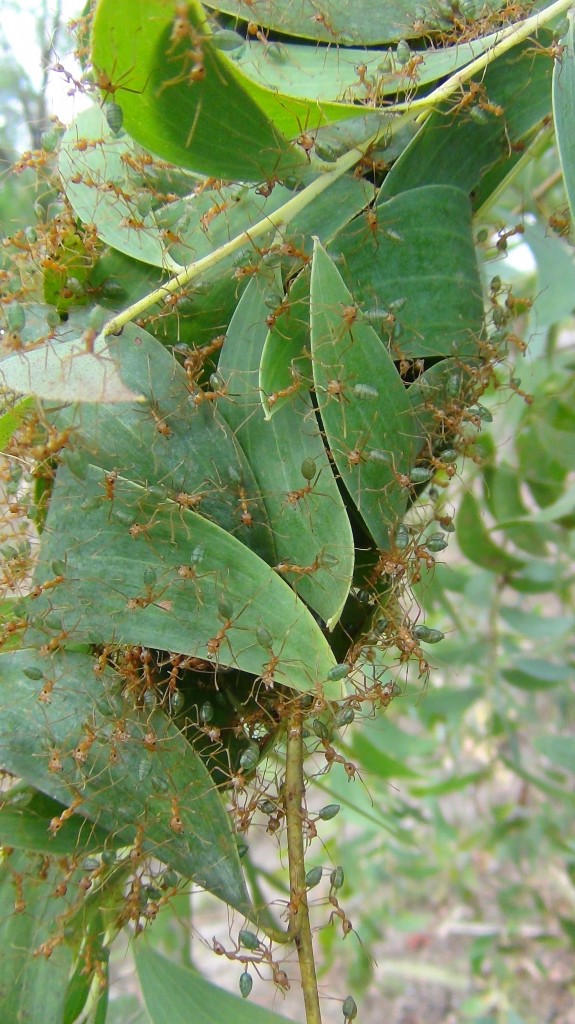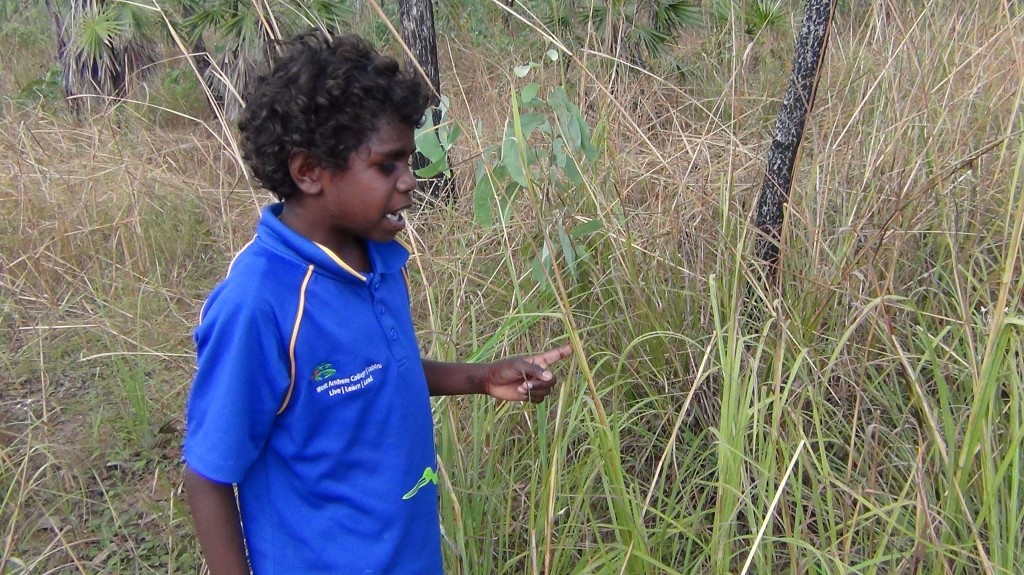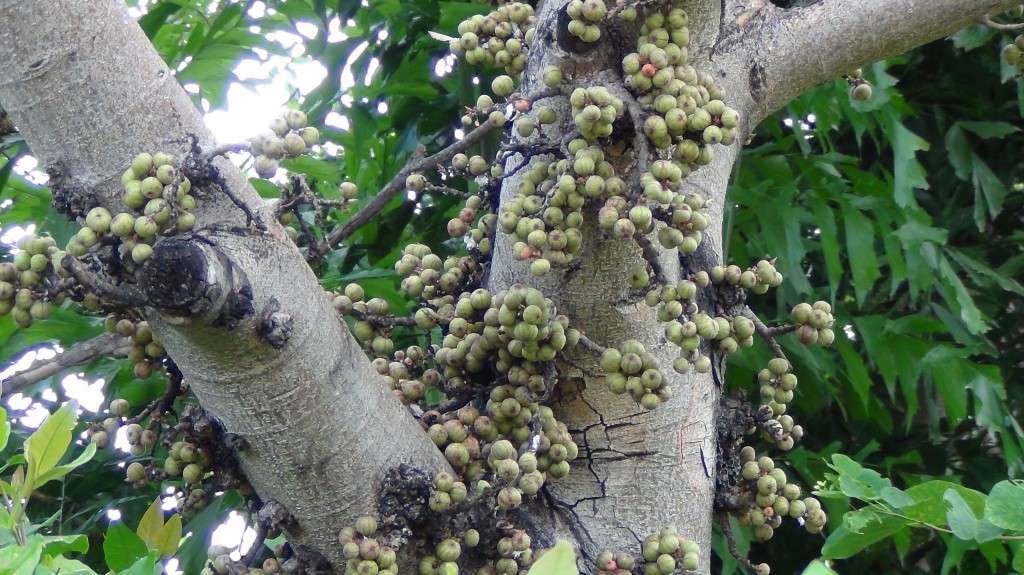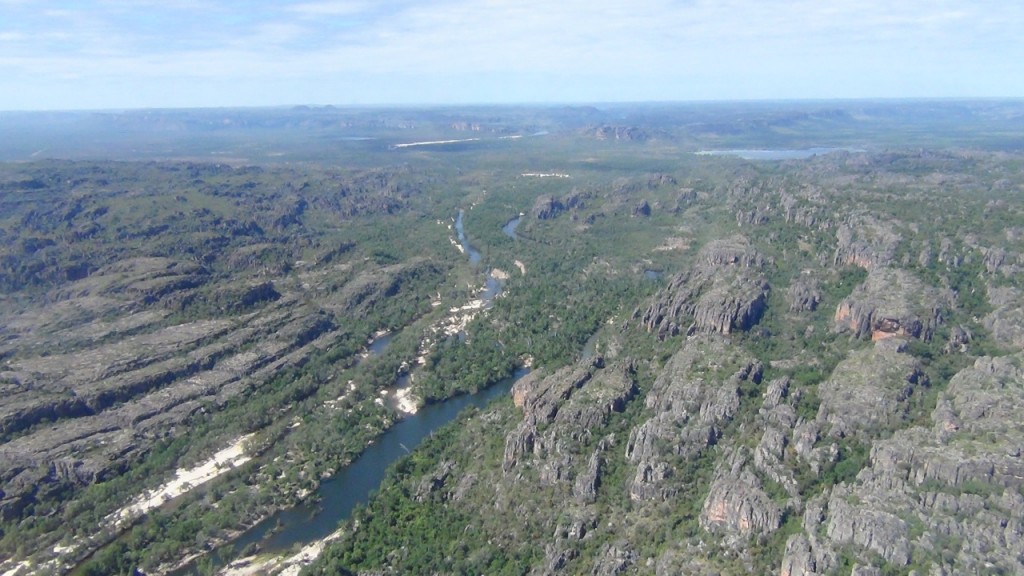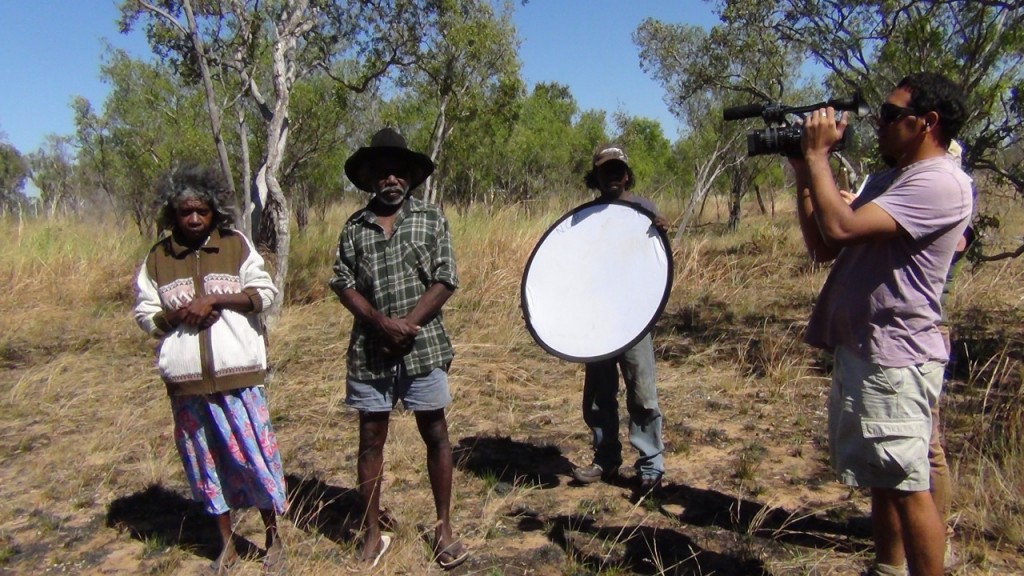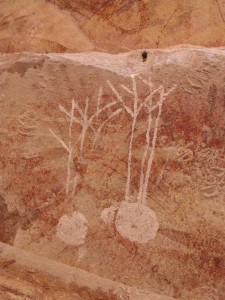Nawakadj Kenneth Mangiru Kayolyolme bu Njanjma Rangers kahdurrkmirri Ubirr
Kenneth Mangiru talks about his work with the Njanjma Rangers at Ubirr
Photos, audio recordings, Kunwinjku transcription and translation by Andy Peart
Njanjma Rangers, Western Arnhem Land/Kakadu National Park
[soundcloud url="https://api.soundcloud.com/tracks/174522879" params="color=c14406&auto_play=false&hide_related=false&show_comments=true&show_user=true&show_reposts=false" width="100%" height="166" iframe="true" /]
[00:00:00.00] Ngaye Nawakadj Narranek, Kenneth Mangiru.
I am Kenneth Mangiru, and my skin group is Nawakadj, my clan group is Danek.
[00:00:04.28] Ngaye Njanjma Ranger nga-rrurkmirri, konda kore Ubirr.
I work with the Njanjma Rangers here at Ubirr [in Kakadu National Park]
[00:00:11.02] Ngaye nga-marnebengyolyolme tourist bu kunred kondah Ubirr
I give talks to tourists at Ubirr.
[00:00:19.15] "Manmak Manme, Manmak Kunred"
We call these talks “ Manmak Manme, Manmak Kunred” which means good food, good country.
[00:00:27.23] Ngaye ngabenbukkan tourists bu... ngayolyolme manu bim nawu kakarrme kunwok, nabuyika nawu bim minj kakarrme kunwok.
I show the tourist rock art and tell them stories if that rock art has a story – some rock art don't have stories.
[00:00:45.07] Bim nawu yiman manu manme konda kayo. Birrikarrmeng kobohbanj korrokoni birrirey, birrnguni and bim.
Rock art such as paintings that show the animals and yams people used to catch for food in this area, that they used to eat and then paint in rock art
[soundcloud url="https://api.soundcloud.com/tracks/174524156" params="color=c13e11&auto_play=false&hide_related=false&show_comments=true&show_user=true&show_reposts=false" width="100%" height="166" iframe="true" /]
[00:00:00.00] AP: Nawakadj, yiddok kunwardde ngurrimey, um, nawu Njanjma Rangers, funding ba bu ngurribolknahnan kunred?
Have the rangers got funding now to look after country?
[00:00:11.17] KM: Yoh, ngarrbolknahnan kunred ngadberre, bu bim, spray ngarriyime mimosa and weed, and rock art, dja ngarrbenbukkan bu tourists kore kabirrinan bim?
Yes, we will look after country – protect rock art, spray mimosa and kill other weeds, and show tourists rock art.
[00:00:31.23] AP: Dja wurdwurd?
And what about the children?
[00:00:31.23] KM: And wurdwurd ngarrbenbukkan bu ngad ngadberre, bu ngarrbenbukkan bu kabirrikarrme traditional way.
We'll teach kids traditional knowledge as part of our work.
[00:00:51.06] AP: Baleh keno ngurridedjingmang?
When do you start?
[00:00:56.09] KM: Might be nabuyika dird start kabirriyime, or mandjewkbuyika.
Might be next month (October 2014) or next year.
[00:01:09.17] AP: Dja baleh kayime nawu rangers?
How many rangers will there be?
[00:01:15.16] KM: Maitbi ngarrbenmang nawu six nawu fulltime and casual ngarrbenmang after.
We will pick six full time rangers and then later employ some casuals.
[00:01:25.26] AP: Dja baleh kunred ngurribolknahnan?
Which area will you look after?
[00:01:29.18] KM: Ngarribolknahnan kore kunred Red Lily, Mikkinj and Kudjumarndi, kume ngarri-durrkmirri those three place. Bonj.
We will look after country around three places – Red Lilly Billabong, Mikkinj Valley and Kudjumarndi (Tin Camp Creek/ Myra Falls area). That's it.
Bonj
That is all.
